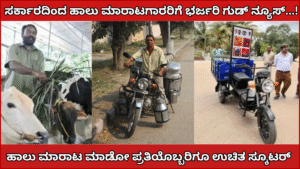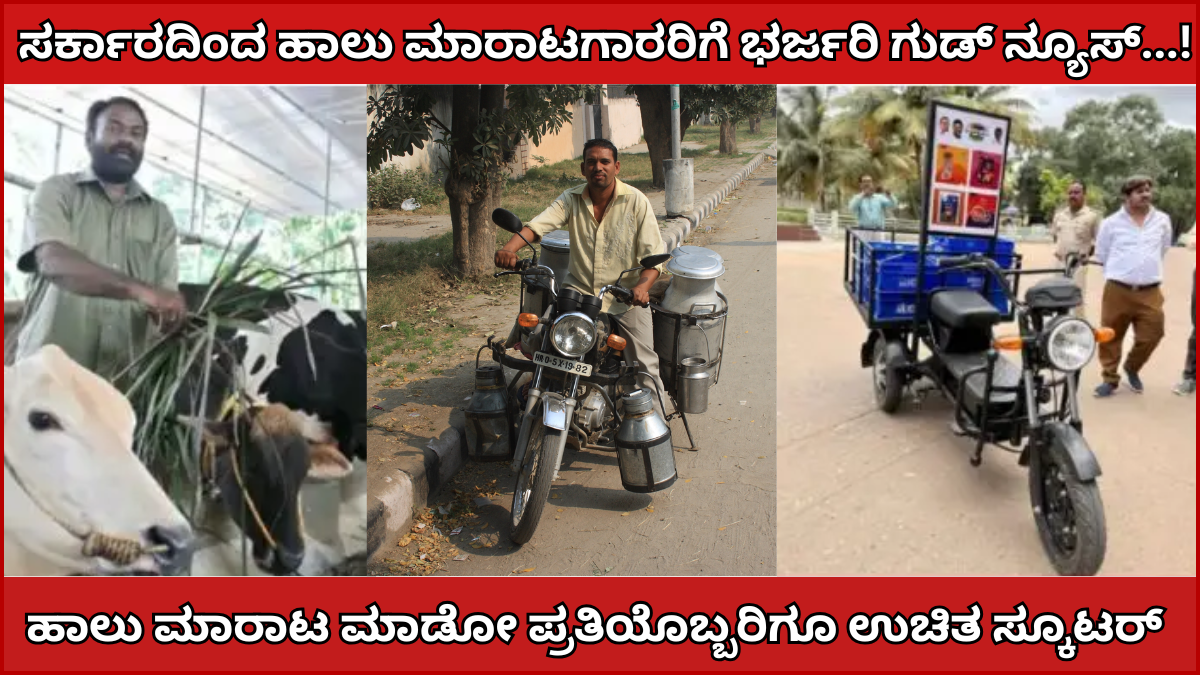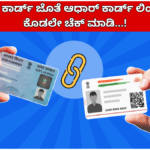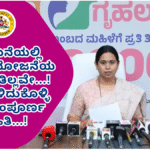Introduction
India’s journey toward sustainable transportation has opened new opportunities to connect clean technology with the livelihoods of ordinary workers. Among these opportunities, one visionary idea stands out — the Free Electric Scooter Scheme for Milk Carriers.

This proposed initiative would provide electric scooters, either free or heavily subsidised, to people who deliver milk across villages, towns, and cities. These “milk carriers” form the backbone of India’s informal dairy logistics, yet they often work under tight margins, using outdated petrol vehicles or bicycles. Supporting them with efficient, eco-friendly mobility could reduce their costs, raise their income, and modernise the milk supply chain while cutting emissions.
This article explores the concept in depth — why the scheme is necessary, how it could work, what benefits it offers, and how challenges could be overcome through practical design and implementation.
Why the Scheme Is Necessary
1. Milk Carriers and Their Economic Reality
Across India, lakhs of small milk distributors carry milk from cooperatives or farms to homes, vendors, and processing units. Many operate informally, earning modest incomes and lacking financial support or modern equipment. Their biggest daily costs are fuel and vehicle maintenance. A move to electric mobility would directly address these recurring expenses and bring dignity to their essential work.
2. Rising Fuel Costs and Environmental Urgency
Petrol and diesel prices have risen sharply in recent years, squeezing the earnings of delivery workers. Electric scooters, which cost only a few paise per kilometre to run, could save thousands of rupees monthly. Moreover, transitioning to electric vehicles (EVs) aligns with India’s climate goals and national EV policy, which aims for a significant reduction in emissions from the transport sector.
3. Strengthening the Dairy Ecosystem
Milk is a time-sensitive commodity — freshness directly affects quality and value. Faster, reliable delivery ensures that cooperatives and consumers receive better service. A modern electric fleet would help reduce spoilage, streamline routes, and integrate rural suppliers with urban demand centres.
4. Promoting Social Equity
Most milk carriers belong to economically weaker sections and lack access to credit. Providing them free or subsidised e-scooters would serve as both social welfare and economic empowerment. Linking green technology with poverty reduction also reflects the inclusive development priorities of many state governments.
5. Learning from Related Initiatives
Although no state has yet launched a dedicated “free scooter” scheme for milk carriers, several related programs set valuable precedents. For example, Tamil Nadu provides a subsidy for delivery workers to buy e-scooters, Gujarat’s Dairy Sahakar scheme strengthens dairy cooperatives, and Himachal Pradesh’s Doodh Protsahan Yojana supports milk transport. These show strong governmental interest in both dairy modernisation and green mobility — a promising foundation for this combined idea.
Designing the Scheme: Core Elements
A well-planned structure would ensure transparency, fairness, and long-term success.
A. Defining the Beneficiary
Eligibility must be clear and verifiable. Beneficiaries could include individuals officially registered with dairy cooperatives or milk unions who regularly deliver milk to customers or collection centres. Priority might go to low-income carriers, women workers, or those with a proven record of service.
B. Technical Standards for Scooters
The electric scooters supplied under the scheme should:
- Offer a range of at least 80–100 km per charge.
- Withstand heavy daily use and rural road conditions.
- Include load-carrying capacity for milk crates or insulated boxes.
- Come with manufacturer warranty and accessible after-sales service.
- Feature safety equipment such as helmets and reflectors.
A government-approved list of models can maintain quality while allowing choice.
C. Cost and Funding Structure
While called “free,” the scheme could mix full subsidy and partial contribution models:
- Fully funded for the most economically disadvantaged.
- 80–90 % subsidy for others, ensuring personal responsibility.
- Options for zero-interest cooperative loans or lease-to-own models.
The government or dairy federation would cover registration, first-year insurance, and possibly maintenance for the initial period.
D. Implementation Pathway
The scheme could run through dairy unions or local cooperatives:
- Application – Eligible carriers apply through an online or offline process verified by cooperative records.
- Selection – Transparent criteria or first-come-first-served method ensures fairness.
- Training & Delivery – Beneficiaries receive hands-on training on e-scooter operation, charging, and maintenance.
- After-Sales Support – Service centres or mobile technicians handle regular check-ups.
- Monitoring – Cooperative supervisors track usage to confirm the scooter remains in milk-delivery service.
E. Financial Planning
If each scooter costs about ₹70,000, providing 1,000 vehicles would require roughly ₹7 crore plus logistics and training costs. Central or state grants, cooperative funds, or CSR contributions from EV manufacturers could finance it.
F. Supporting Infrastructure
A successful roll-out depends on:
- Charging hubs near collection points or cooperative offices.
- Solar or hybrid power backup in rural areas.
- Road-safety awareness and rider insurance.
- Battery recycling or replacement systems.
- Maintenance partnerships with authorised workshops.
G. Safeguards and Accountability
To ensure long-term effectiveness:
- Beneficiaries should not own another two-wheeler.
- Vehicles must be used primarily for milk transport.
- Ownership transfer or resale should be restricted for a fixed term.
- Non-compliance could trigger reclaim or suspension from the cooperative.
Benefits and Expected Outcomes
1. Direct Economic Gains
Fuel and repair expenses currently eat into carriers’ small earnings. Replacing petrol scooters could save around ₹5,000–₹6,000 monthly, significantly improving household income.
2. Supply-Chain Efficiency
Reliable, low-maintenance scooters allow faster and more consistent milk delivery, reducing spoilage and improving trust between producers and consumers.
3. Environmental Improvement
Each electric scooter replacing a petrol vehicle can prevent roughly one tonne of CO₂ emissions annually. This contributes meaningfully to cleaner air and supports India’s renewable-energy targets.
4. Social Empowerment
Owning a modern vehicle enhances dignity and independence. Women carriers, in particular, may find greater mobility and income stability, promoting gender equity within the dairy workforce.
5. Industrial and Policy Impact
The scheme would boost demand for locally manufactured e-scooters, encourage service-station development in rural areas, and showcase how EV policy can work hand-in-hand with agricultural sectors.
Obstacles and Solutions
A. High Initial Cost
EVs still cost more upfront than petrol scooters. Bulk procurement, manufacturer partnerships, and layered subsidies can keep per-unit prices affordable.
B. Maintenance and Spare-Part Availability
To prevent downtime, the scheme must establish authorised service centres in every target district and train local technicians.
C. Limited Charging Infrastructure
Rural areas often face electricity shortages. Cooperatives could install solar-based chargers at milk collection points or deploy portable battery-swap systems.
D. Misuse or Diversion
Strong monitoring through registration numbers, GPS-enabled odometers, or periodic inspections can ensure scooters stay in service for milk delivery.
E. Beneficiary Selection Fairness
A transparent application portal, third-party verification, and grievance mechanisms will help prevent corruption or favouritism.
F. Rapid Technological Change
Since EV technology evolves quickly, the program should choose scalable, easily serviceable models and plan for future upgrades.
G. Behavioural Adaptation
To counter hesitation about EV reliability, early pilot projects and peer success stories can build trust and familiarity among carriers.
Learning from Similar Programs
Existing government initiatives show how cross-sector collaboration can succeed:
- PM E-DRIVE encourages adoption of electric two-wheelers nationwide.
- Tamil Nadu’s gig-worker subsidy offers financial assistance for e-scooter purchases.
- Himachal Pradesh’s milk-support programs demonstrate how dairy subsidies can integrate transport aid.
- During the COVID-19 lockdown, Ludhiana’s e-rickshaw project turned local vehicles into mobile milk booths, proving electric transport can serve the dairy chain effectively.
These lessons provide templates for scaling a dedicated scooter scheme for milk carriers.
Step-by-Step Rollout Proposal
Phase 1: Pilot (First 6 Months)
- Choose one urban and one rural district for a small-scale trial.
- Distribute 100–150 scooters.
- Set up two charging hubs and training sessions.
- Measure results: savings, delivery times, and satisfaction levels.
Phase 2: Expansion (Next 12 Months)
- Refine eligibility and scooter specifications based on pilot data.
- Add more districts and 1,000 new beneficiaries.
- Establish maintenance contracts with local workshops.
- Implement a digital dashboard for monitoring performance.
Phase 3: Statewide Rollout (Beyond Year 2)
- Integrate the scheme with broader EV policies and dairy programs.
- Introduce a replacement cycle for ageing scooters.
- Evaluate socio-economic and environmental impact annually.
Measuring Success
Performance indicators should include:
- Number of scooters distributed and active in service.
- Monthly cost savings and income growth for carriers.
- Reduction in delivery time and milk spoilage.
- Scooter uptime percentage and maintenance frequency.
- Estimated carbon-emission savings.
- User satisfaction and retention rate within cooperatives.
A transparent management information system (MIS) can track these metrics and guide continuous improvement.
Governance and Policy Integration
The initiative could be anchored within state dairy departments or national dairy federations, working jointly with transport and renewable-energy ministries. Integration with state EV incentives — such as registration-fee waivers or road-tax exemptions — would stretch budgets further.
Partnerships with e-scooter manufacturers, cooperative banks, and CSR programs can expand financing and ensure robust support networks. Periodic audits and public reporting will maintain accountability.
Long-Term Sustainability
For the scheme to remain effective beyond initial distribution:
- A small annual maintenance fund should be built into cooperative budgets.
- Beneficiaries could pay a nominal monthly contribution toward servicing.
- A revolving fund might replace old batteries after four to five years.
- Digital monitoring tools (mobile apps, SMS reporting) can flag breakdowns and service needs early.
- The program should encourage multipurpose use — milk, dairy products, or other community deliveries — to maximise utilisation.
A Hypothetical Case Study: Karnataka Model
Imagine Karnataka launching a “Green Milk Mobility Mission.”
Eligibility: Registered cooperative milk carriers delivering at least 40 litres per day; annual family income under ₹4 lakh; no personal vehicle ownership.
Benefit: A zero-emission scooter, helmet, and charger supplied free of cost, plus free electricity for overnight charging at the cooperative depot.
Support: One-year insurance, safety training, and three scheduled maintenance visits.
Results (After One Year):
- Average monthly savings per carrier: ₹5,500.
- Delivery coverage improved by 12 %.
- Reported milk spoilage reduced by 9 %.
- Emissions equivalent to 90 tonnes of CO₂ saved.
Minor issues like charger access and early battery wear were addressed in the next phase through improved infrastructure.
This hypothetical scenario illustrates how well-planned execution can deliver measurable social, economic, and environmental outcomes.
Why “Free” May Work Better Than “Subsidised Only”
While standard EV subsidies are helpful, many informal workers cannot arrange even the remaining amount. Providing scooters at no or token cost ensures full participation of those most in need.
The “free” label also has symbolic value — it shows direct recognition of milk carriers’ contribution to society. To maintain accountability, recipients could be required to use the vehicle for a minimum number of service years before full ownership transfer.
Wider Impacts and Opportunities
A successful rollout could inspire similar initiatives in other sectors:
- Vegetable and fish vendors, postal or grocery delivery agents, and small traders could all benefit from EV adoption.
- Demand for durable rural-grade e-scooters would stimulate innovation among Indian manufacturers.
- Solar charging hubs could evolve into community energy points.
- The model contributes to India’s larger goals of net-zero emissions and rural prosperity.
Moreover, cooperatives adopting EV fleets enhance their public image as climate-conscious, people-first organisations.
Considerations Unique to Milk Delivery
Designing for the specific realities of milk distribution is crucial:
- Timing: Most routes operate before sunrise; charging systems must support overnight readiness.
- Payload: Scooters need reinforced carriers for multiple milk cans or crates.
- Terrain: Suspension and tyres must suit uneven rural roads.
- Hygiene: Easy-to-clean body frames and insulated storage options are essential.
- Reliability: Downtime during early morning rounds could mean lost customers, so rapid maintenance response is vital.
Anticipated Risks and Mitigation
- Battery degradation: Budget battery replacements after 4 years.
- Breakdowns: Maintain spare scooters at depots for temporary substitution.
- Abandonment: Link continued cooperative membership to scooter usage.
- Funding shortfall: Explore public-private partnerships and CSR pooling.
- Skill gaps: Train local youth as certified EV mechanics, creating new employment.
- Grid pressure: Adopt solar or hybrid charging to reduce electricity-load issues.
Policy Recommendations
- Integrate this scheme under the national or state EV mission framework.
- Coordinate across dairy, transport, and energy departments.
- Prioritise women beneficiaries to enhance gender balance.
- Conduct periodic impact assessments and public disclosure of results.
- Include lifecycle planning — from procurement to disposal.
- Launch awareness campaigns highlighting benefits of e-mobility in rural livelihoods.
- Encourage innovation in battery-swap and low-cost charging technologies suited for rural areas.
Conclusion
The Free Electric Scooter Scheme for Milk Carriers represents a transformative vision — uniting sustainable mobility, economic inclusion, and agricultural efficiency. By replacing outdated petrol vehicles with clean electric scooters, governments and cooperatives can uplift thousands of hardworking milk distributors while moving closer to India’s clean-energy goals.
The initiative would not merely distribute vehicles; it would redefine how grassroots workers connect with technology and opportunity. Through careful planning, transparent governance, and supportive infrastructure, such a program could become a model of green livelihood promotion — ensuring that the shift to electric mobility benefits not just the cities, but the rural heart of India itself.











